Key takeaways:
- Cross-disciplinary teaching enhances student engagement by integrating subjects, fostering creativity and critical thinking.
- Music education promotes cognitive and social development, self-expression, and emotional intelligence among students.
- Challenges in cross-disciplinary teaching include varying student engagement, expertise levels, and time constraints.
- Successful projects showcase the impact of combining disciplines, encouraging collaboration and personal connection in learning experiences.
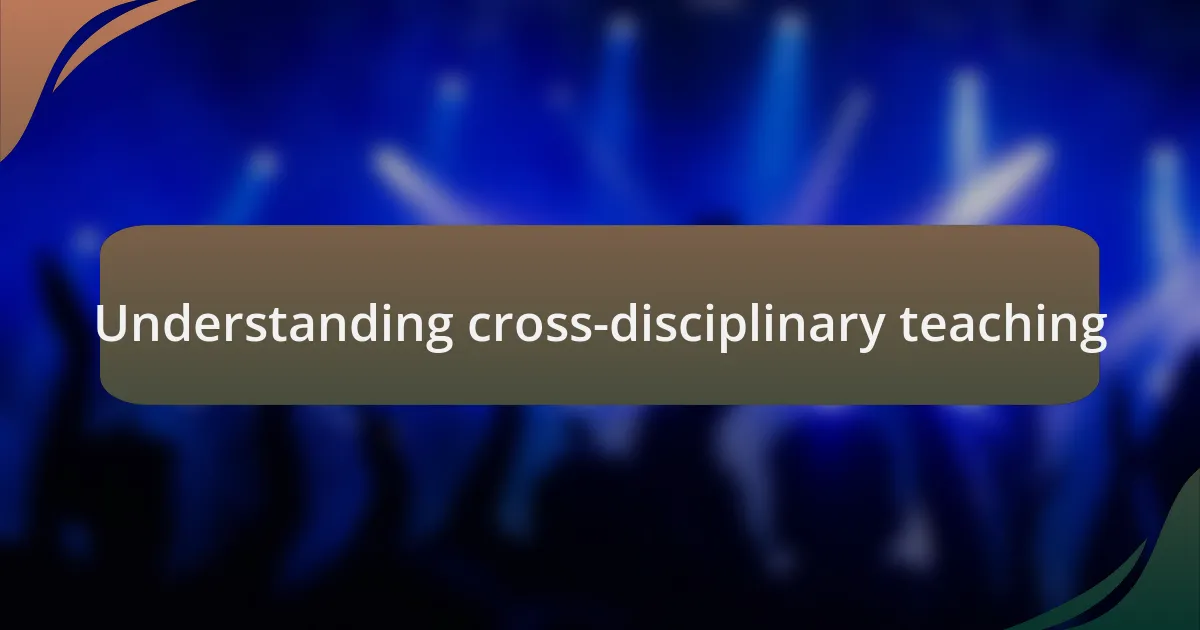
Understanding cross-disciplinary teaching
Cross-disciplinary teaching involves integrating knowledge and skills from multiple subjects to enhance learning experiences. I remember the moment it clicked for me during a collaborative project that merged music with visual arts. As we blended melodies with imagery, it was astonishing how the students engaged deeply, creating connections they might not have discovered otherwise.
Have you ever thought about how music can illuminate concepts in science? I recall a project where we explored sound waves, and it struck me how students grasped abstract theories when they could hear and feel the vibrations. It was as if the music not only entertained but transformed complex ideas into something tangible and relatable.
The beauty of cross-disciplinary teaching lies in its ability to foster creativity and critical thinking. When students see the interplay between subjects, they begin to think outside the box. I often wonder—what if more educators embraced this approach? The potential for enriching student understanding and engagement is vast, and witnessing those lightbulb moments is profound.
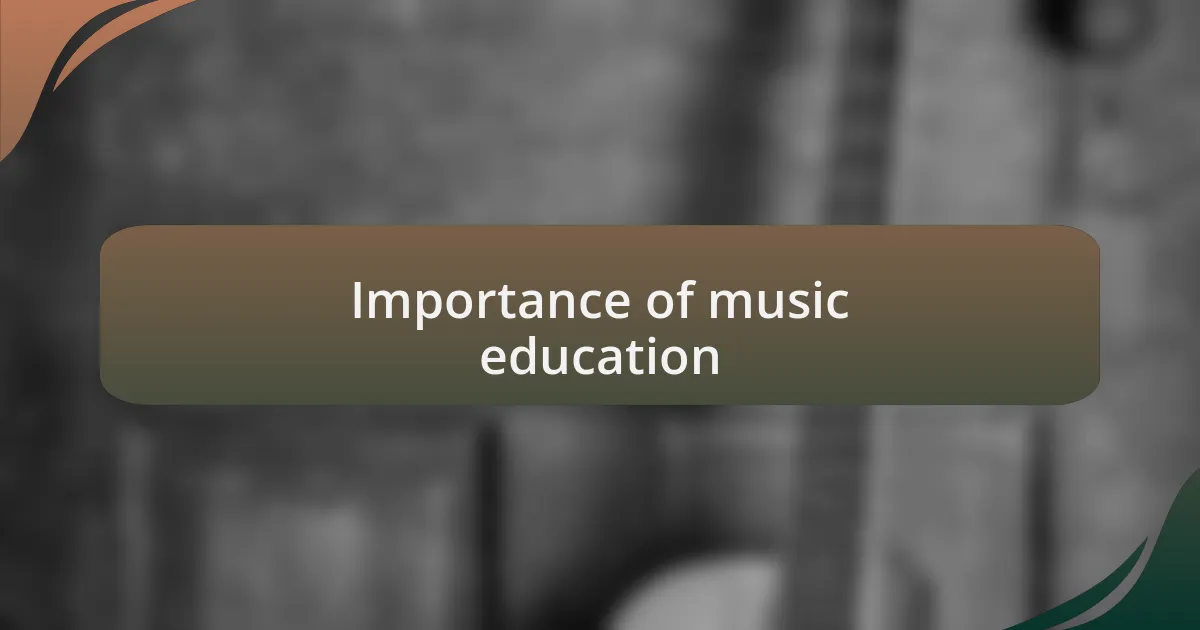
Importance of music education
Music education holds immense importance in shaping not just musical skills but also cognitive and social development. I remember teaching a group of elementary students, and the moment they started collaborating on a song, I could see their confidence bloom. It was amazing how learning to play together on instruments translated into deeper relationships and improved communication skills.
What if we considered music education as a gateway to building discipline and perseverance? I’ve seen students struggle initially, but as they practiced, their determination grew. When they finally performed, the sense of accomplishment was palpable, echoing the profound power of music in fostering resilience.
Moreover, music education encourages self-expression and emotional intelligence. I recall a student who found solace in songwriting during tough times. It reminded me that music is more than notes; it’s a language that allows students to articulate their feelings and connect with others on a deeper level. How could we underestimate the significance of teaching our young ones this invaluable skill?
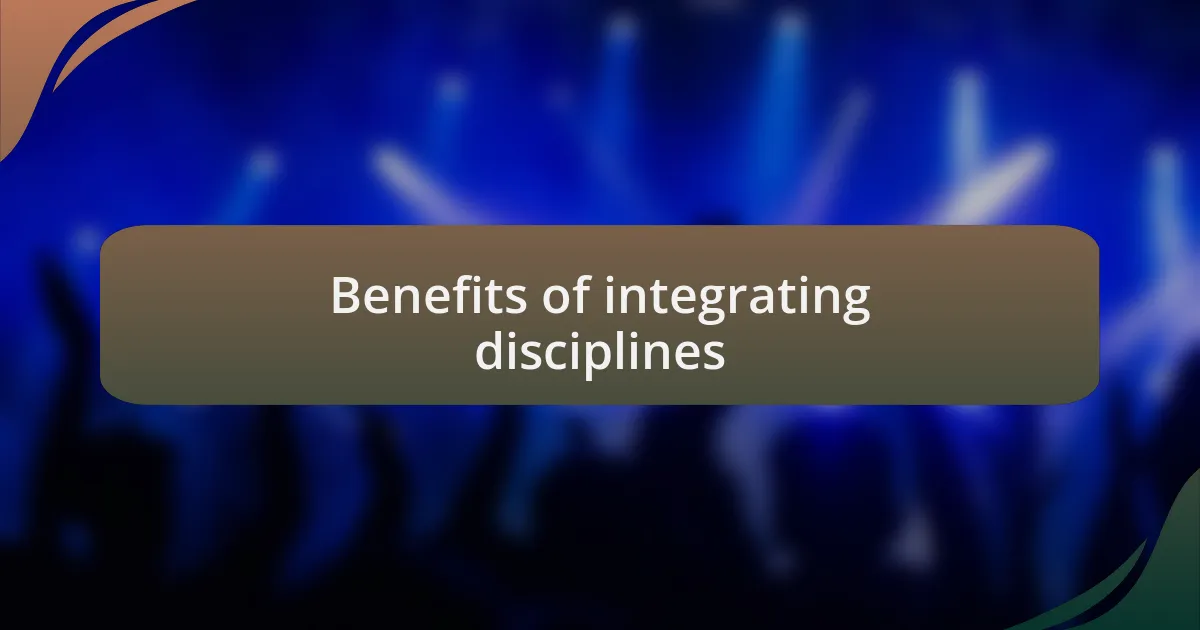
Benefits of integrating disciplines
Integrating disciplines in music education can lead to a richer learning experience. I recall a project where we combined music with storytelling, allowing students to compose soundtracks for their written narratives. It was remarkable to see how this multi-faceted approach not only enhanced their creativity but also deepened their understanding of both music and literature. They were not just creating music; they were weaving together emotions and narratives in a way that made learning feel authentic and connected.
Another advantage I’ve noticed is the boost in problem-solving skills that arises from cross-disciplinary work. In one instance, I encouraged a group to think like scientists while constructing musical instruments from everyday materials. The process required them to experiment with sound and mechanics, transforming a simple lesson into an exploration of physics and art. Watching their excitement as they made discoveries was a testament to the power of blending disciplines. Isn’t it incredible how such connections can ignite curiosity?
Furthermore, integrating disciplines often fosters teamwork and collaboration among students. I remember organizing a workshop where musicians worked alongside visual artists to create a multi-sensory experience. The students learned to respect each other’s perspectives and expertise as they combined their talents to produce something unique together. When disciplines intersect, it cultivates an environment of shared respect and understanding—an essential skill for life beyond the classroom. How often do we get to witness this kind of synergy?
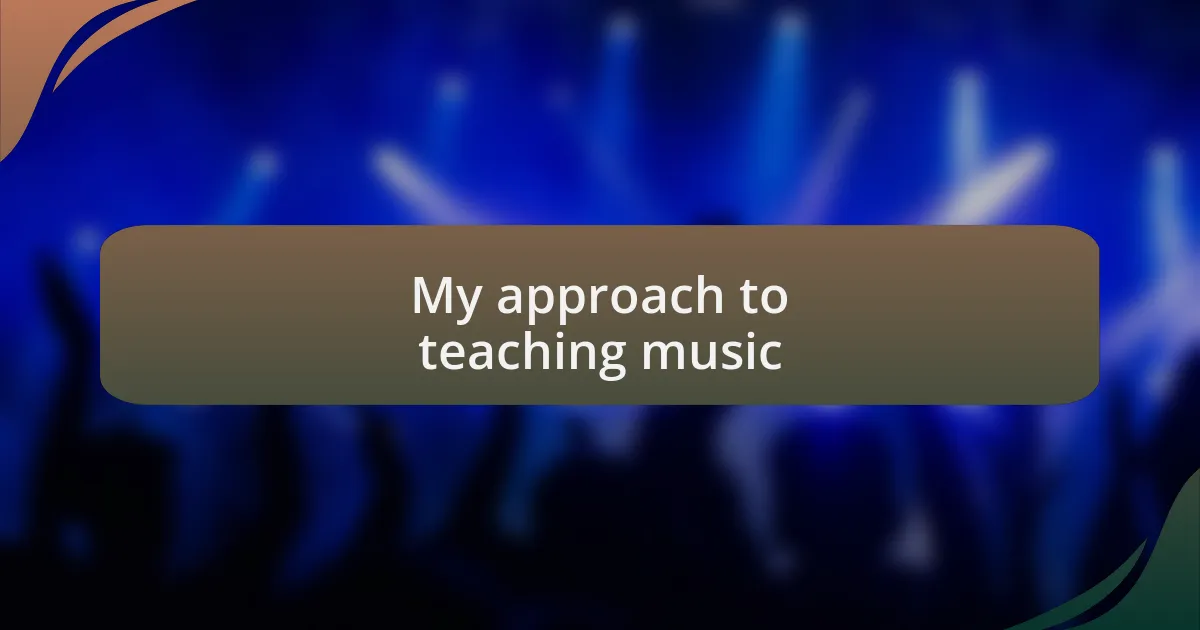
My approach to teaching music
In my approach to teaching music, I focus on creating a safe space for students to express themselves. I remember a time when I introduced a lesson on improvisation, encouraging students to share their thoughts on what music meant to them. The conversations that unfolded were deeply moving; students opened up about personal stories and emotions, which transformed their musical expressions. How often do we really connect with the feelings behind the notes? I believe that this emotional engagement is what truly elevates their musical journey.
I also prioritize hands-on experiences to make learning tangible. During a recent class project, I guided students in crafting their own compositions by integrating different cultural elements. As they explored rhythms from around the world, I watched their eyes light up with inspiration. It was as if each beat was uncovering a new layer of their identity and heritage. Isn’t it fascinating how music can resonate so closely with who we are and where we come from?
Lastly, I strive to incorporate technology into my lessons, as it can break down barriers and enhance creativity. Recently, I facilitated a session where students used music software to digitally produce their pieces. The initial confusion quickly gave way to excitement as they realized they had the power to create intricate soundscapes with just a few clicks. I often wonder, how can we continue to harness technology to not only teach skills but also spark a passion for music within our students?
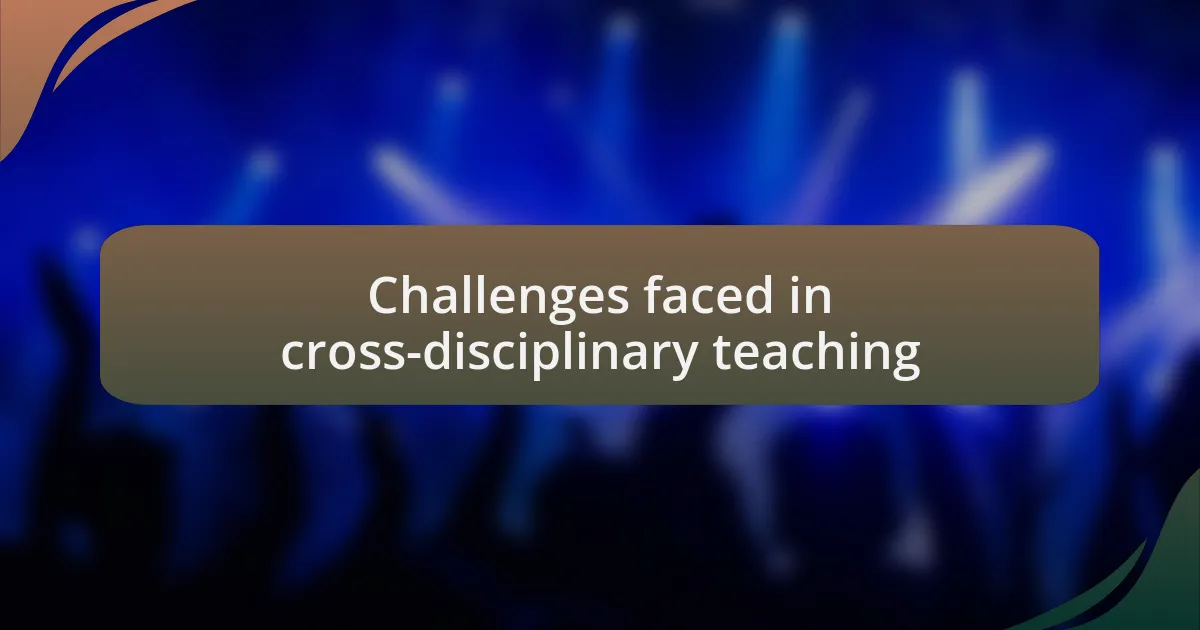
Challenges faced in cross-disciplinary teaching
Cross-disciplinary teaching certainly brings its own set of challenges that can sometimes feel overwhelming. For instance, I faced difficulties when trying to merge music with visual arts in a recent project. The disparity in student engagement levels was striking; while some thrived in this blended environment, others struggled to find a connection between the two fields. It made me question: how can we effectively bridge these creative gaps among diverse learners?
Another challenge I encountered was the varying levels of expertise across different disciplines. During a collaborative lesson on rhythm and poetry, I noticed that some students were well-versed in musical concepts, while others felt lost in the literary components. This disparity led to frustration among students, leaving me wondering, how can I foster an atmosphere where everyone feels equally valued and empowered to contribute?
Time constraints often loom large in cross-disciplinary projects as well. I vividly recall a time when I planned a series of lessons that were meant to unfold over several weeks, only to find myself racing against the clock. The pressure to fit two sets of curricula into already tight schedules can diminish the depth of exploration. Isn’t it crucial to give students the ample time they need to genuinely immerse themselves in the creative process, rather than rushing through it?
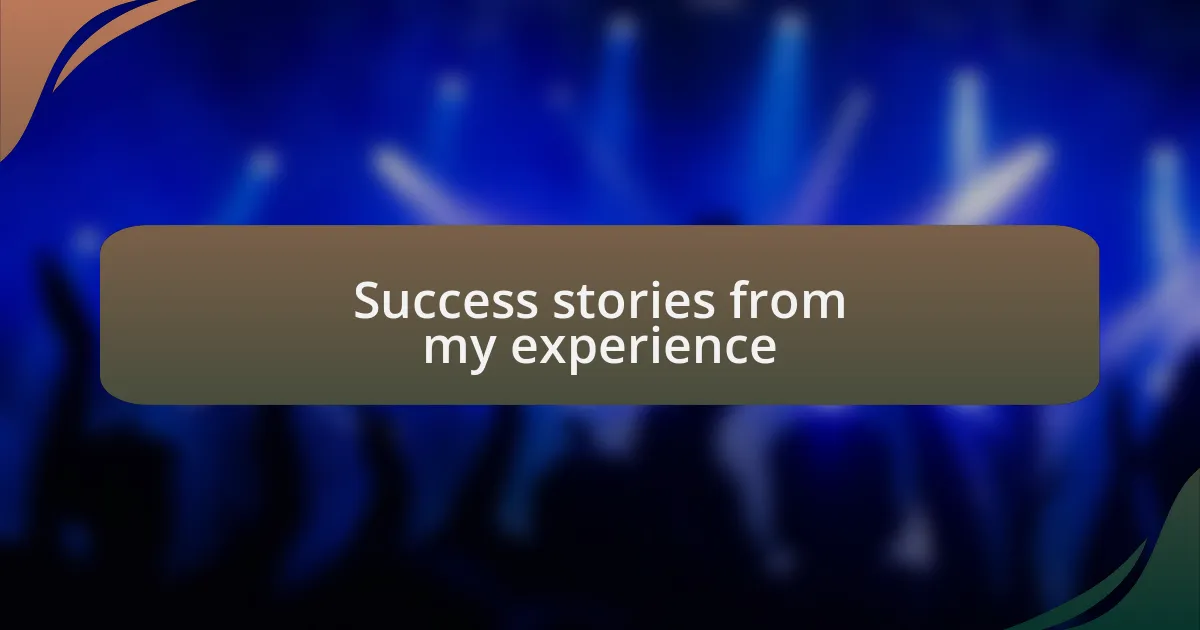
Success stories from my experience
One particularly rewarding experience emerged when I integrated music with history by exploring folk songs from different cultures. It was incredible to witness students not only engaging with the rhythms and melodies but also connecting these musical pieces to historical events. The excitement in their eyes as they shared insights about the songs’ backgrounds was a reminder of the profound impact that cross-disciplinary teaching can have.
I also recall a collaborative project that combined music and science, where we delved into sound waves and their properties. The students created instruments from everyday materials, and their eagerness to experiment was contagious. Watching them apply scientific concepts to create something tangible was a reminder that learning can be both fun and meaningful when disciplines intersect.
Perhaps one of my most cherished moments was during a theater and music project, where students composed and performed original pieces inspired by their personal stories. Their vulnerability in sharing what mattered most to them brought the group closer, fostering a supportive environment. It was moments like these that truly showed me how powerful it can be to give space for students to express themselves through multiple lenses.
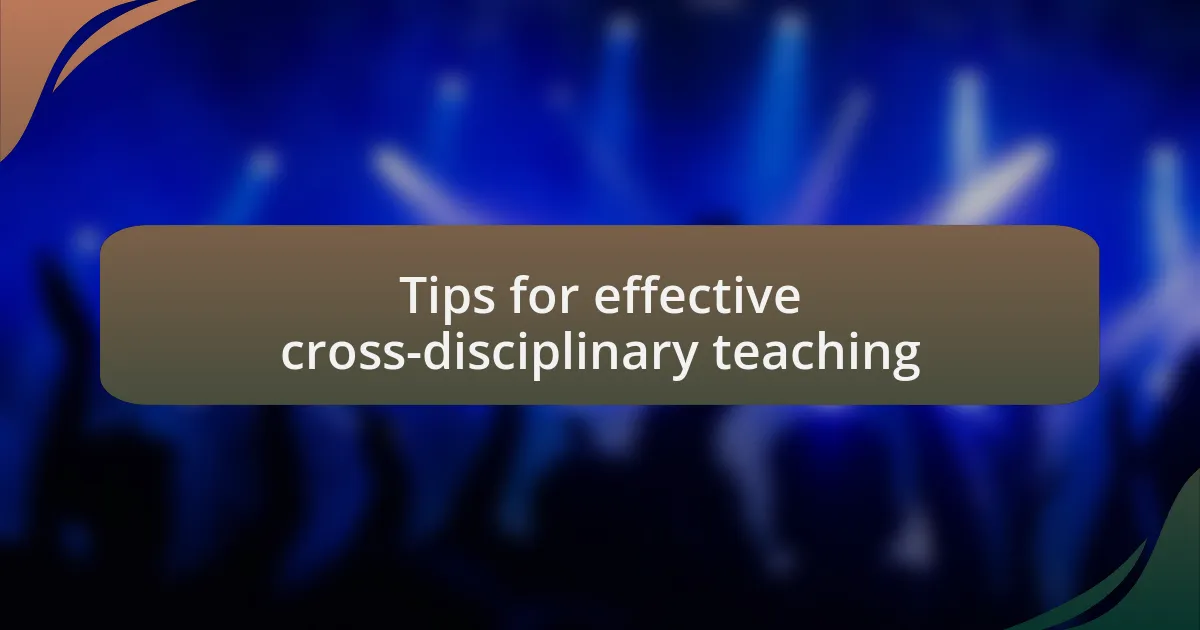
Tips for effective cross-disciplinary teaching
When I think about effective cross-disciplinary teaching, communication stands out as a crucial element. For instance, I once organized a workshop where art and music teachers collaborated to create a themed interactive experience. We discussed how color and sound relate emotionally, and the students seemed to light up as they expressed connections in their artwork. Isn’t it fascinating how discussing a simple concept can lead to a deeper understanding?
Another tip is to embrace flexibility in your curriculum design. I remember a time when I adjusted my lesson plans on the fly to accommodate a student’s unique perspective on rhythm inspired by her dance background. By welcoming that spontaneity, not only did the whole class benefit, but it also reinforced the idea that learning is often a fluid process. Have you ever seen how such moments can reshape the learning experience for everyone involved?
Lastly, build a community around your cross-disciplinary initiatives. During a project that connected literature with music, we created a space for students to share their thoughts openly, and I was amazed by the discussions that ensued. The collaborative environment sparked creativity and led to unexpected connections among students from various backgrounds. How do we create the kind of atmosphere where everyone feels comfortable sharing? It starts with fostering trust and encouraging curiosity.